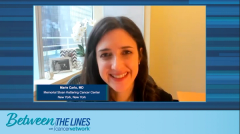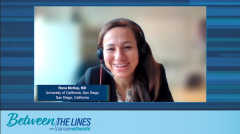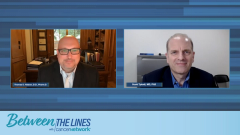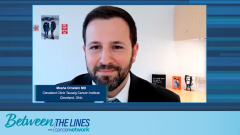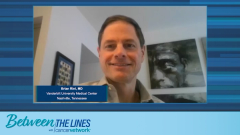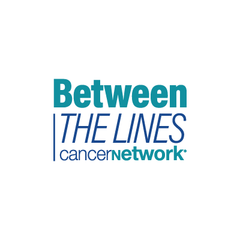
Unmet Needs in Advanced Renal Cell Carcinoma Management
Two kidney cancer experts explore the current unmet needs for patients with advanced renal cell carcinoma.
Episodes in this series

Brian Rini, MD: What do you think are the biggest unmet needs that we have? We’re at this place of having a lot of data and a lot of options but still not curing those patients? What are the big remaining unmet needs?
Mehmet Asim Bilen, MD: I have 3 big clusters that I can mention, Brian. The first 1 we touched on earlier are biomarkers. Our job is even getting more and more difficult when we’re going to start using those drugs all together like a triplet and so on and so forth. But whatever biomarker we have, currently that come from those large phase 3 trials, they compare with sunitinib [Sutent] and now our control arm is different and we are combining everything together. Hopefully, we’re going to have something soon. The second thing is what is the optimum sequencing. We still don’t have any strong data to guide us for the best sequencing. And the third thing is non-clear cell RCC [renal cell carcinoma]. We had an amazing improvement and momentum in the clear cell population, but we don’t have the same in the non-clear cell population that we see in our practice. And hopefully, we’re going to have more data in the non-clear cell that [are] going to give us the similar clinical outcome just [as] we see in the clear cell population.
Brian Rini, MD: I agree entirely. Biomarkers are the holy grail of oncology. We’ve not developed clinically useful biomarkers in kidney cancer yet. I’m hopeful it happens soon. PD-L1 staining just as stated is not useful. It’s not associated at all with outcome for the IO/TKI [immuno-oncology/tyrosine kinase inhibitor] regimens. With ipilimumab [Yervoy] and nivolumab [Opdivo] it enriches for outcome but PD-L1 negative patients can still benefit so it hasn’t been clinically useful. And that’s true in a lot of diseases where initially it seemed PD-L1 would be a good biomarker but it’s become unreliable over time. And I don’t use that in clinical practice. I don’t think it’s helpful. Non-clear cell, I agree. It’s been encouraging to see that there have been more non-clear cell trials recently and more data coming out. There’s a bigger interest among industry sponsors to match the investigator interest a little more known about the biology. We’re still a little away from great treatments for those patients but we’re getting closer. And again, the biggest remaining unmet need is to cure more patients. We’re starting to have regimens that are curative. We saw the long-term, ipilimumab/nivolumab survival data recently and 30% of patients are progression-free at 5 years. Nearly 50% were alive. The median survival was almost 5 years, so we’re definitely curing a fraction of patients. We don’t have that long-term follow-up data for IO/TKIs yet but we’re getting there in the next year or so. But just state the obvious that’s where we’re headed. And maybe to go to the last topic of what trials are coming, we’re heading towards more cures by combining more drugs.
Transcript edited for clarity.
Newsletter
Stay up to date on recent advances in the multidisciplinary approach to cancer.


